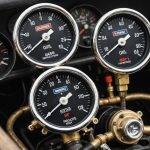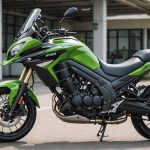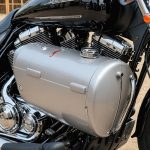Understanding Headlight Alignment
Proper headlight alignment is crucial to ensure car visibility, especially in foggy weather. When headlights are misaligned, they may fail to illuminate the road effectively, creating hazards. Poor alignment can lead to reduced visibility not only for the driver but also for oncoming traffic, increasing the risk of accidents. In foggy conditions, this situation is exacerbated as the dispersion of light becomes more vital. Misaligned beams can reflect off fog particles, impairing the driver’s vision.
To prioritize safety, the UK enforces legal requirements regarding headlight alignment. Regulations ensure that beams are properly aimed to avoid dazzling other drivers and to maximise the driver’s field of vision. Maintenance guides often underline the necessity of regular alignment checks, as even minor misalignments can significantly impact performance. In foggy weather, properly aligned headlights enhance road visibility, aiding in distance judgement and obstacle detection. Hence, ensuring optimal alignment is not just a recommendation but a matter of safety compliance. Understanding and adhering to these standards not only protects oneself but also ensures mutual safety on the roads.
Topic to read : The complete handbook for safely installing rear-facing baby car seats in uk vehicles
Tools and Materials Needed for Adjustment
Proper alignment of headlights is essential for safe driving, especially in foggy weather. For a DIY headlight alignment, having the right headlight adjustment tools is crucial. Common tools include a screwdriver for adjusting the headlight’s aim, a tape measure to ensure equal distance on both beams, and a bubble level for precision. It’s also recommended to have a wall or a flat surface at hand to project headlight beams for accurate positioning.
Car maintenance tools such as wheel chocks and a jack can be used to stabilise the vehicle while making adjustments. For precise adjustments, mounting a laser level or using a specialised headlight alignment kit can enhance accuracy. These optional tools provide an added level of assurance that your alignment is as precise as possible.
Have you seen this : Ultimate diy manual: how to install a heads-up display (hud) in your uk car
Additionally, several maintenance materials like cleaning cloths and spray can help keep headlight lenses spotless, which is vital for ensuring clear beams. Those keen on more sophisticated setups might explore electronic alignment gauges, available for purchase online or at automotive stores. Ensuring you have the right tools and materials will make the process of adjusting headlights much smoother and more effective.
Step-by-Step Guide to Checking Headlight Alignment
Before starting the alignment process, it is crucial to prepare the vehicle correctly.
Preparing the Vehicle
Parking the car on a level surface is essential to ensure accurate measurements. Engaging the handbrake provides additional stability. To avoid unnecessary movement during the headlight check, use wheel chocks to secure the car in place effectively.
Marking the Headlight Position
Mark the vertical and horizontal centre points of your vehicle’s headlights on a wall or garage door using masking tape. This step helps establish a reference line for DIY guide adjustments. Ensuring that the marks are at the same height from the ground is key for accurate alignment.
Measuring the Alignment
Measuring the beam’s height requires precise methods. The ideal distance is approximately 25 feet, allowing you to check how well the headlights align with the taped reference points. Utilise a tape measure for accuracy in assessing the beam’s alignment against the marked lines. This procedure assists in confirming whether adjustments are needed, ensuring your headlights are optimally aligned for safe driving. Proper measurement techniques contribute to enhanced driver visibility, especially in adverse conditions.
Adjusting Headlight Alignment
Headlight adjustment is essential to improve visibility, notably during foggy weather. The process begins with ensuring your vehicle is on even ground, which stabilizes it for reliable alignment tips. Using a screwdriver, adjust the horizontal and vertical knobs found at the back of the headlights. This alters the beam’s direction.
Fine-tuning for optimal fog driving visibility requires precision. The aim is to angle the beams slightly downward, reducing glare that may reflect off fog particles. Testing the adjustments in real conditions further ensures safety by checking the improvement in visibility.
Always verify the beam’s reach, as improper settings can dazzle oncoming drivers. An effective method is to park the car facing a wall, marking where the beams hit at a 25-foot distance. Following alignment, assess these points for any necessary tweaks.
Conducting a headlight assessment isn’t complete without a real-world trial. Take the car for a test drive, ideally in low-light conditions, to evaluate the adjustments against actual conditions. This practical step confirms that headlight adjustments are correctly enhancing visibility and ensuring safe travels in fog-laden environments.
Common Issues with Headlight Alignment
Experiencing headlight problems can significantly impact car visibility, especially in adverse conditions. Frequent causes of misalignment include hitting potholes, minor accidents, or incorrect installation. When these issues arise, troubleshooting becomes essential to resolve them promptly.
Certain signs suggest that headlights need realignment, such as uneven illumination patterns or other drivers flashing their lights at you, indicating they’re being dazzled. Identifying these symptoms early aids in maintaining safe driving conditions.
Solutions to common alignment problems begin with regular car maintenance checks to ensure everything is correctly in place. Aligning headlights should follow necessary steps as outlined—like using proper car maintenance tools to adjust the headlight assembly.
Additionally, it’s beneficial to conduct a headlight check after triggering events such as rough terrain travel. If issues persist, professional assessment is recommended. Proactively addressing alignment problems can significantly enhance driving safety, particularly in challenging weather conditions where optimal driver visibility is crucial.
Types of Headlights Best for Foggy Conditions
Choosing the right types of headlights is critical for visibility enhancement in foggy conditions. Among the options, halogen, LED, and HID headlights each offer unique benefits. Halogen bulbs, being affordable and widely available, are standard. However, their yellowish light may not cut through fog as effectively as other options.
LED headlights provide a brighter and whiter light, improving overall car visibility in adverse weather. Their energy efficiency and longevity further make them an attractive choice. However, they can sometimes scatter light unfavourably in thick fog.
HID headlights (High-Intensity Discharge), known for their powerful beam and longer range, significantly enhance visibility. Yet, they can be blinding if not aligned correctly, especially to oncoming traffic.
Fog lights are specifically designed for foggy weather. Positioned lower on the vehicle, they emit a wide, bar-like beam that reduces glare and helps drivers see the lanes better. They are a valuable addition to any vehicle facing frequent inclement weather.
For optimal fog visibility, it’s advisable to combine standard headlights with fog lights, achieving balance in beam spread and intensity. This combination maximizes safety and performance on the road.
Safety Considerations When Adjusting Headlights
Headlight adjustment safety is a crucial aspect of ensuring overall car safety. Properly aligned headlights significantly enhance driver visibility, reducing the risk of accidents. Misalignment not only diminishes your ability to see but also affects how others see your vehicle, leading to possible road hazards.
When adjusting headlights, it is paramount to adopt best practices to minimise distractions and ensure a focused approach. Align the car on level ground, in front of a wall, to project the beams clearly without any obstructions. This method aids in precision, averting adjustments that might mistakenly distract you while driving.
Be aware of the legal implications of improper headlight use in the UK. Regulations require headlights to be perfectly aligned to avoid dazzling other drivers. Non-compliance might lead to fines or even affect your insurance claims in case of an incident caused due to improper headlight alignment.
To maintain both your safety and that of others, regular alignment checks are recommended. Address any headlight misalignments immediately to ensure optimal safety, especially in adverse weather conditions.











